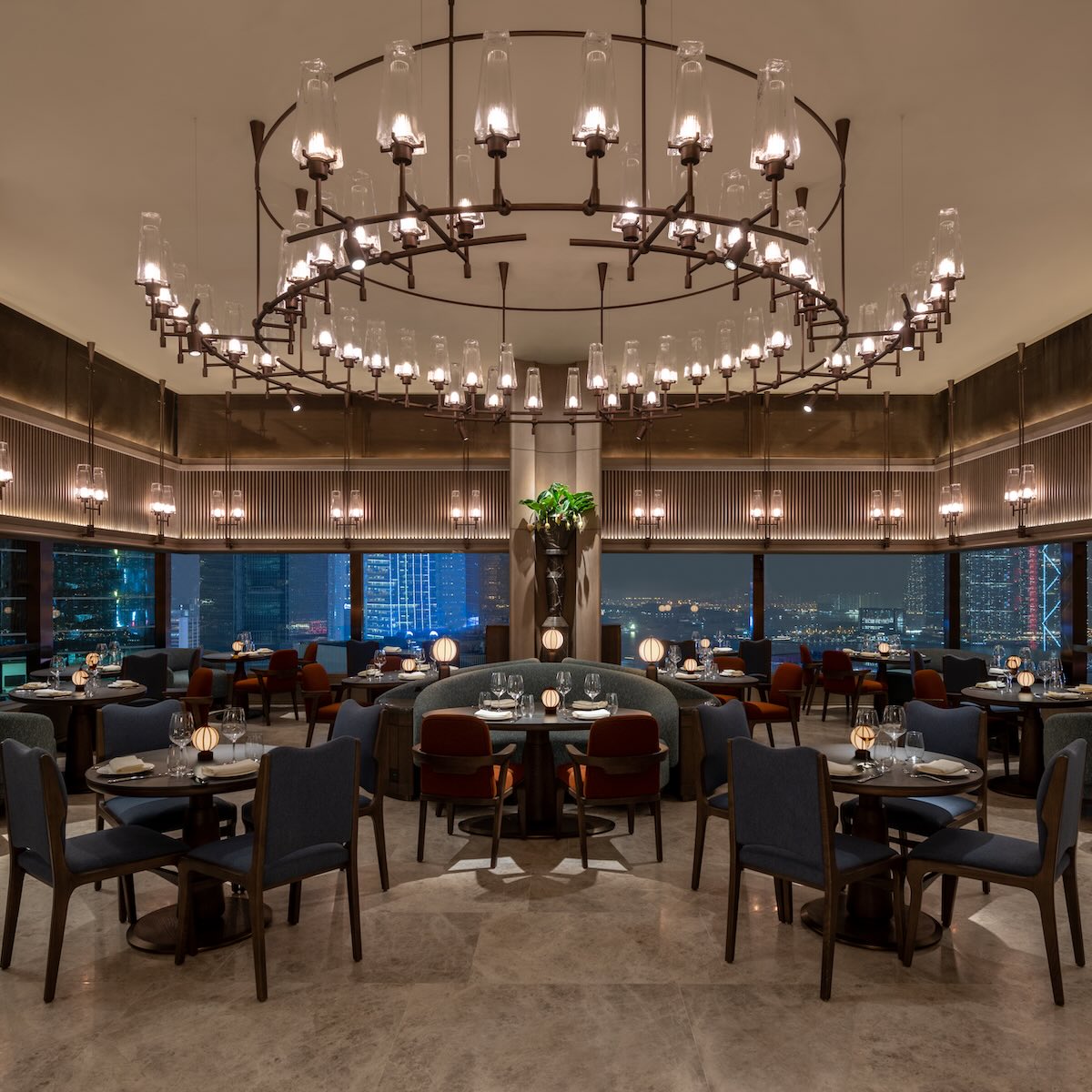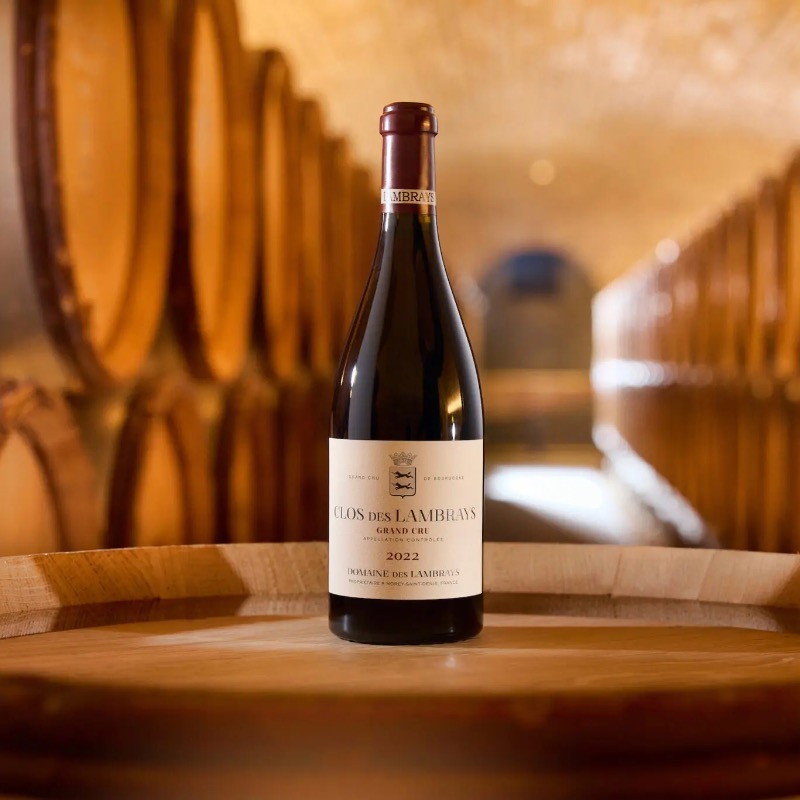By Jen Paolini, Mark Ellwood, Josh Condon, Mary Holland, Sarah Khan, and Jen Murphy
Alone in a Crowd
Don’t bother buying a hotel—there’s no need now, as it has never been easier to enjoy the feeling of your own private resort (if temporarily). Call it an owner’s lodge, a royal villa, or the principal’s home: the must-have of the moment is a mansion-sized, hotel-run lodging that has access to all of the amenities but keeps you far away from fellow guests.
This trend is influenced by a permanent shift in travel patterns. According to Black Tomato’s Sunil Metcalfe, bookings for eight people or more increased by 35 per cent in 2022 compared to 2019. Such group travel now makes up almost a third of the company’s bookings. “The private-villa and privatestaff trend that was massive during Covid is on the wane, but what’s stayed
is a desire for private residences within desirable hotels,” he says. Adventure specialist Gray & Co. has seen a similar shift: In 2023, multi-generational travel had doubled.
Properties from urban centres to beach resorts are adding offshoots primed for such buyouts: Oslo’s Sommerro offers the smartly named 11-room Villa Inkognito. At Caiman, the resort-cum-wildlife-preserve in Brazil’s wetland Pantanal region, the private villa Baiazinha sleeps 12. And on Lizard Island, in Australia’s Great Barrier Reef, the deck of the Lizard House overlooks a beach David Attenborough is said to have called one of his favourite places in the world.
Need more than just a single structure? Not to worry. Fiji’s Kokomo Private Island has five residences with three or more bedrooms, each perched on a hilltop. At Long Bay Villas on Anguilla, you can book a trio of homes separately or together.
One&Only’s new Greek property Kéa Island, meanwhile, looks more like a village of luxury homes than a hotel. And in Africa, the luxury safari realm’s move towards micro camps, such as Botswana’s North Island Okavango or Tarkuni Homestead
(on South Africa’s Tswalu Kalahari Reserve), is also driven by this trend.
On St Barts, Eden Rock takes this a step further, offering a catalogue of 200 privately owned homes dotted around the island. The programme is so successful that it has spawned both clones (local rival Hotel Le Toiny has its own portfolio of over a dozen) and expansion. Eden Rock operator Oetker Collection is now offering a similar service along the Côte d’Azur. It’s a reminder of that well-worn piece of financial advice: Why buy when you can rent?
MIDDLE EASTERN ELEGANCE
THE LANA, DORCHESTER COLLECTION
Dubai, United Arab Emirates
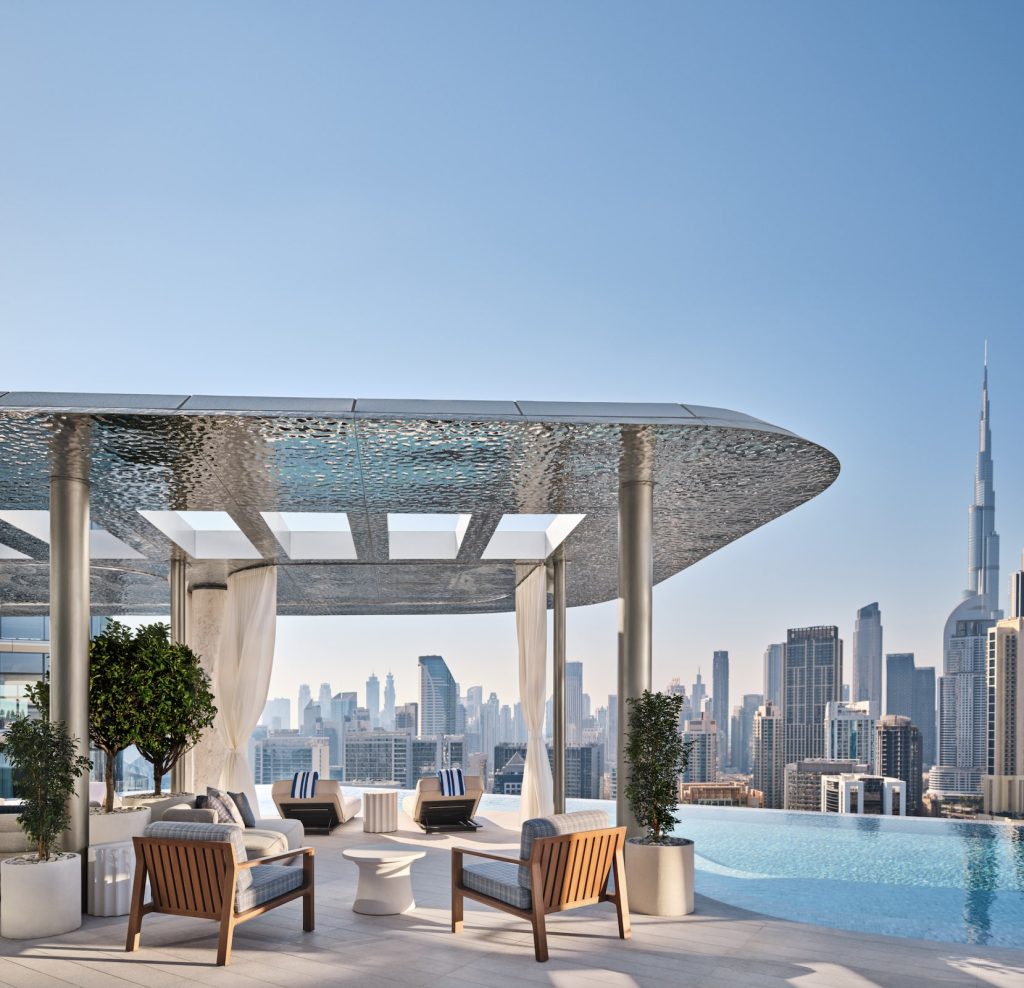
Dorchester Collection, operator of such legendary European hotels as 45 Park Lane and Hôtel Plaza Athénée, gracefully entered the UAE with its first property in the Middle East. Marching to the beat of your own drum in a place saturated with over-the-top extravagance is not aneasy task, but Dorchester Collection’s distinct continental identity proves to be a breath of fresh air.
Foster & Partners created the decisive silhouette of The Lana, an interlocking design of two towers—one reserved for the hotel, the other for branded residences—punctuated by open spaces and stately columns. It’s also elevated off the ground to dramatic effect as the structure overlooks the Marasi Bay Marina. French duo Gilles & Boissier interpreted the desert landscape and climate of Dubai into a sophisticated palette of warm gold, creamy neutrals, blushed rose tones, and rich browns interwoven with a textural library of veined marble, all while deftly balancing feminine and masculine characteristics throughout. It’s quiet, tasteful elegance at its best, standing in stark contrast to the ostentatious glitz and glam so often seen in Dubai.
Of the 225 rooms and suites available, the Marina Duplex Suite is suitably impressive—this palatial duplex is drenched in natural light, and its residential feel makes it a fine option for longer stays. The Lana can also claim bragging rights to the first Dior Spa in the UAE. With eight restaurants and bars, this is a foodie’s paradise; the hotel enlisted three award-winning chefs—Jean Imbert, Martín Berasategui, and Angelo Musa—to develop four of them.
CONTEMPORARY DESIGN
JANU TOKYO
Tokyo, Japan
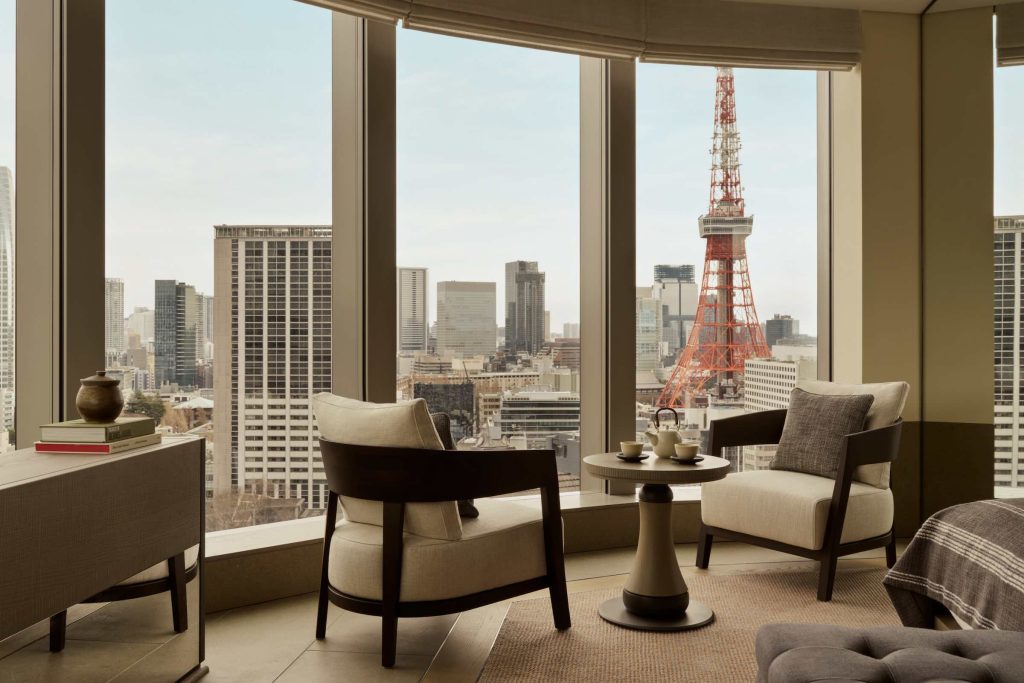
Aman’s new concept, Janu, turns most of what we know about Aman on its head, and this dynamic launch is more than just an offshoot—it stands on its own two legs as a hospitality brand with an emphasis on community. Embracing interactive engagement, shared experiences, and active lifestyles, Janu Tokyo calls to a younger generation of urban explorers and social travellers. Part of the ambitious Azabudai Hills development, Janu Tokyo is emblematic of a fresh perspective on luxury hospitality. Understated interiors underline a soulful city setting. Frequent Aman collaborator Jean-Michel Gathy of Denniston fuses Asian minimalism with modern global influences, sparking a visual dialogue between East and West across 122 rooms.
As for Janu’s spa and gym, it’s easier to note down what’s not on offer. At 4,000 square metres, the gargantuan wellness and fitness centre stands in a category of its own. A 340-square-metre gym with Outrace and SkillX circuit systems already makes this one of the largest in the city. Add to that a 25-metre pool, movement studios for yoga, a golf simulator, a spin room, and a boxing ring—it’s the place to be for anyone looking to take their exercise seriously (with a dose of fun). Seven treatment rooms stand at the ready for guests to indulge in spa rituals. For the ultimate pampering session, two private banya or hammam spa houses are available, with separate hot and cold plunge pools, private terraces, relaxation rooms, and double treatment rooms. It’s not an overstatement to say that Janu’s integrative wellness ecosystem and facilities are unmatched, setting a new standard that will be challenging for others to live up to.
HISTORICAL CONVERSION
MANDARIN ORIENTAL QIANMEN, BEIJING
Beijing, China
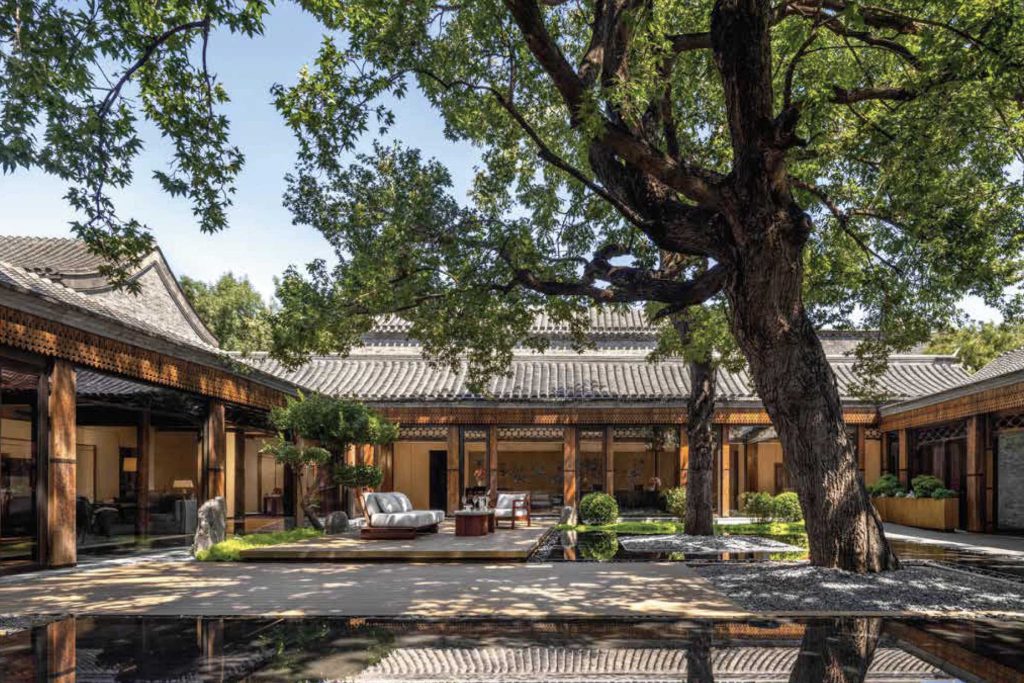
Mandarin Oriental bolsters its hospitality options in China’s capital with a second opening amidst the ancient alleyways of the charming Caochang hutong—one of the best-preserved examples of such storied neighbourhoods remaining in Beijing. If sublime design and a jaunt through the past rank highly on your list, you’ve come to the right place. 42 expansive houses, each with their own private courtyards, are interspersed among traditional siheyuan residences for an authentic, immersive experience into Chinese history come alive. Most impressive of them all is the Peking Mansion, a one-bedroom residence with ample living and dining spaces as well as a tearoom, bearing design and décor reflective of local Beijing life, blended with Mandarin Oriental elegance. 90 per cent of the courtyard houses, meticulously renovated, maintain original features and architecture, their appearances expertly preserved for posterity. Chinese cultural heritage is a strong thread across the property, seen in such details as the reception counter, inspired by Mingera painting tables, and inkstone inlays. Naturally, guided tours of the Caochang hutong and local arts and crafts workshops are part of the programming.
Exquisite Cantonese and Chaozhou cuisine can be had at the Chef Fei-ideated Yan Garden—the copper hotpot is a special dining experience available upon request for guests in higher-tier houses, and highly recommended. Contemporary cocktail bar Tiao melds hutong lore with innovative mixology. Vicini, helmed by Edoardo Luongo, brings vibrant Italian dining to the fore. Meanwhile, the Spa blends traditional Chinese wellness practices with modern techniques; soak in the transcendental reverberations of a gong bath at the Qiyuan Healing Space, or feel the nourishing benefits of the lotus flower through a foot ritual and body scrub, followed by an acupressure massage and deep relaxation on a Welnamis acoustic and vibrational therapy bed.
TRAIN TRAVEL
EASTERN & ORIENTAL EXPRESS, A BELMOND TRAIN
Southeast Asia
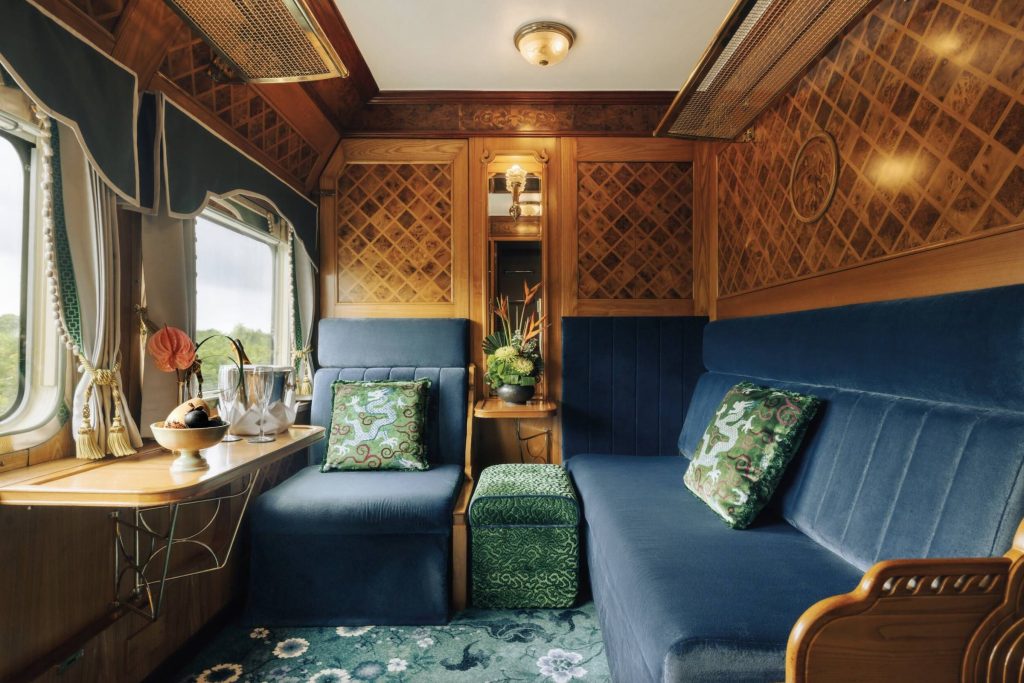
A romp through the tropical terrains of Southeast Asia is always enticing, but have you experienced it aboard a luxury locomotive? Following the popularity of the revamped Venice Simplon-Orient-Express, Belmond relaunched its majestic Eastern & Oriental Express, with adventurous routes embarking from Singapore through the jungles, rainforests, rivers, and rice fields of Malaysia, with stops in urban centres like Johor Bahru, Ipoh, Kuala Lumpur, and Penang. Along the way, a variety of different itineraries are made available to guests, including a tour of the Taman Negara National Park to see extraordinary flora and fauna, a visit to the Perlis Geopark for astounding biodiversity, and much more.
André Chiang brings Michelin-calibre noshing to the train’s two dining cars, Adisorn and Malaya. Guests can tuck into the vibrant, spiced flavours of Peranakan cuisine, reimagined through Chiang’s contemporary lens, while Nanyang jazz and nostalgic melodies hum in serenade.
Observe the ever-changing landscape as the train rolls through the countryside from one of 16 Art Deco-inspired carriages—with three categories of sleeping cars and an open-air observation car among them—richly decorated in Malaysian embroidery, silks, marquetry, batik and wicker detailing, and wood panelling. After a long day out, unwind at the Dior Spa onboard the Eastern & Oriental Express—there’s no better place for wellness on the move.
SAFARI CAMP
LOAPI
Tswalu Kalahari Reserve, South Africa
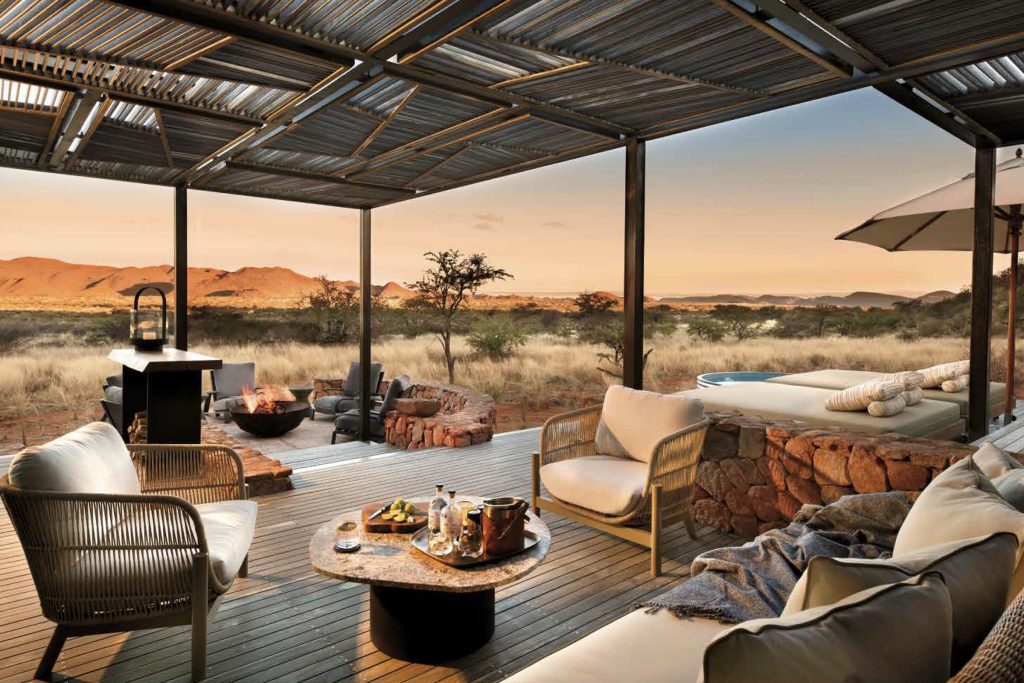
You wouldn’t expect to stumble upon six cutting-edge glass, steel, and canvas structures in the middle of the Kalahari desert. Unless perhaps you’re within Tswalu, South Africa’s largest private game reserve. The Oppenheimer family, which owns it, has been restoring these lands since 1999. While conservation and sustainability are top of mind here, so are privacy and high design. Loapi, the aforementioned collection of micro camps, is the third and newest addition to this 282,000-acre reserve. It offers a private guide, a butler, and a chef who can cook everything from tapas to curries to freshly baked bread.
The views from the rooms and outdoor terraces are staggering: Grassland and red soil meet the low mountains that jut upwards into a cerulean sky. The interiors are stunning, too, appointed with intricately carved woodpanelled walls, cork ceilings, and coffee-coloured rounded bouclé couches that beg for a post-safari nap.
SIGNATURE SUITE
ISLAND SHANGRI-LA, HONG KONG
Hong Kong SAR
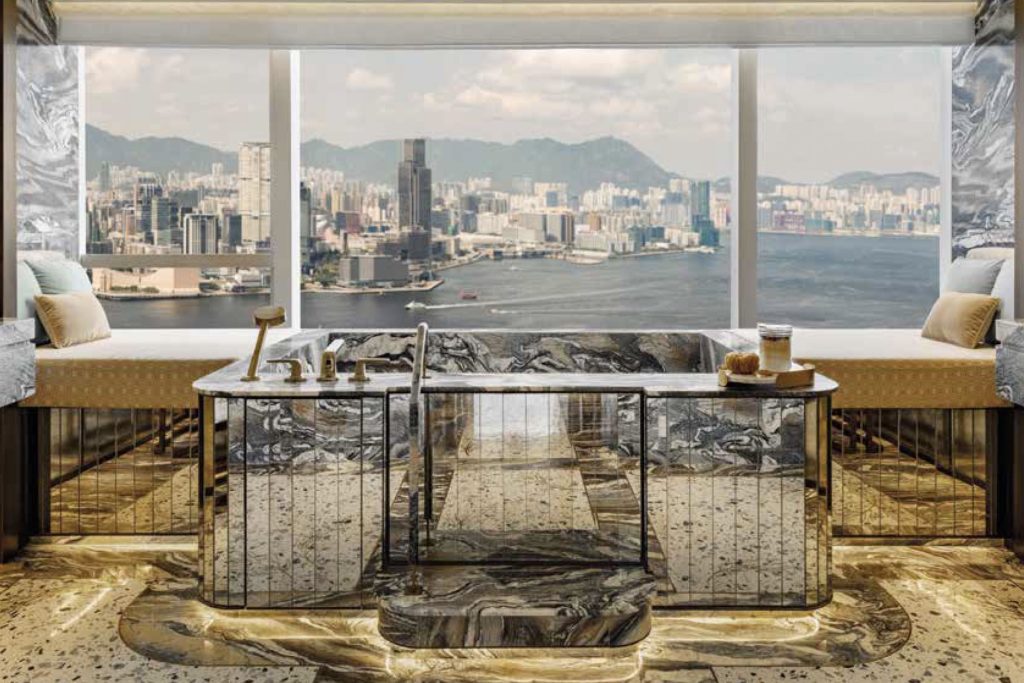
Island Shangri-La has long stood tall on Hong Kong Island as a fixture of luxury hospitality, and after more than three decades, it was decidedly time for an overhaul—and what an overhaul it was. From top to toe, the hotel has been made over in phases—with a new family-focused floor and facilities added to the mix, among other refreshes and renovations—but it’s the new eponymous suite that definitively places the property at the top of its category.
Perched on the 52nd floor, the Shangri-La Suite is the culmination of a multi-year transformation, and this multi-functional, multi-roomed sanctuary in the sky is a stunning design exercise, balancing two bedrooms, a living room with a bar and wine cellar, a dining room seating up to 10, and a separate kitchen across 222 square metres. Marble, woven wallpaper, antique and modern décor, hand-blown chandeliers, hand-tufted rugs, expansive landscape murals, and lacquer detailing burst through the space in a show of tasteful maximalism, framed by wide, panoramic windows looking out over Victoria Harbour. In the master bedroom, his-and-hers dressing rooms and a spa-inspired en-suite bathroom with twin walk-in rainforest showers, a heated bench, and a deep soaking tub add to the opulent experience, not to mention the exclusive Tata Harper amenities and aromatherapy services on hand.
ISLAND RETREAT
SONEVA SECRET
Makunudhoo, Maldives
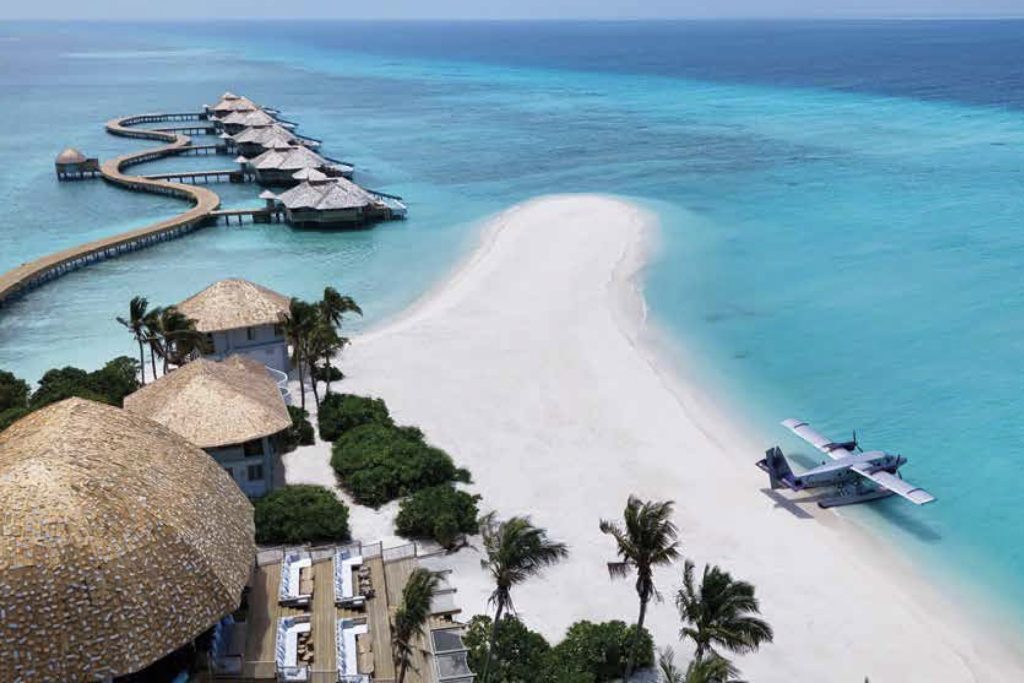
Soneva’s secret is out—and it’s a Maldivian resort that redefines the meaning of bespoke luxury. Comprising just 14 beach and overwater villas, Soneva Secret’s secluded location in Haa Dhaalu, considered the most remote atoll in the Maldives, offers visitors the opportunity to reconnect with nature in a private, personalised way. Guests can choose to stay in an Overwater Hideaway, Beach Hideaway, the Crusoe Villa with a private pool and slide, or the expansive 1,158-square-metre Beach Reserve, spread across two floors with two master bedrooms and two adjoining double bedrooms. Its overwater equivalent, the Crusoe Reserve, is an open-plan retreat with direct lagoon access, retractable roofs, and comfortable living spaces.
Soneva’s superlative hospitality takes centre stage at Secret, where bespoke service is perfected through dedicated Barefoot Guardians and Barefoot Assistants. Its platoon of private chefs—14 in total, so one assigned to each villa, essentially—takes care of customising culinary experiences, whether it’s dining under the stars, zip-lining to a dining tower for your next meal, or digging your toes into the sand at a firepit dinner. Guests can also explore chocolate, ice cream, cheese, and charcuterie rooms. Surrounded by pristine, untouched nature, travellers are perfectly positioned to immerse themselves in the unique attractions of the Maldives. Swim alongside manta rays, turtles, dolphins, whale sharks, and tropical fish; go on a guided snorkelling expedition with a marine biologist; picnic on a deserted island or private sandbank; or take it easy and tech-free at The Den. Spa treatments and wellness activities run the gamut from massages to one-on-one yoga sessions.
URBAN SANCTUARY
BANYAN TREE HIGASHIYAMA KYOTO
Kyoto, Japan
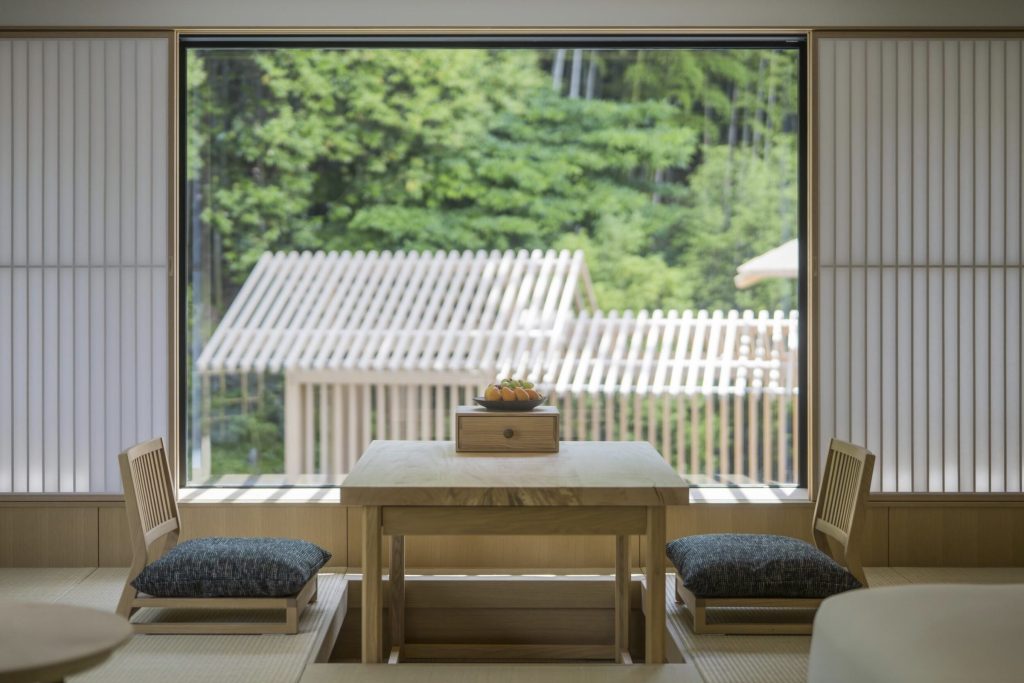
Japan tourism is booming once more. In 2024, the Japan National Tourism Organisation logged more than 36.8 million inbound visitors, surpassing the previous record of 31.8 million set in 2019. Despite overcrowding concerns in key urban centres such as Kyoto, there are still pockets of peaceful respite to be found amid the sea of jostling travellers. Acclaimed architect Kengo Kuma is responsible for at least one such tranquil nest in the city widely considered to be the cultural heart of Japan: the newly opened Banyan Tree Higashiyama Kyoto, marking the Singaporean hospitality group’s first flagship-brand hotel in the country.
Kuma, together with interior designer Yukio Hashimoto, infuses the serene hilltop property with theatrical silhouettes, exquisite craftsmanship, and distinctive detailing drawn from the rich tapestry of local traditions and surrounding nature to captivate the senses. Spring for a Banyan Onsen Retreat room, with a private hot-spring bath, to fully sink into deep, healing relaxation, all while cocooned in an elegant space that showcases graceful, minimalist design.
Guests can witness a classical dance and drama performance at the property’s own Noh stage, taste the intricacies of kaiseki cuisine through seasonal menus and local produce at Ryozen, learn about the art of Japanese incense appreciation through a kōdō ceremony at Sennyū-ji temple, or benefit from therapeutic, Japanese-inflected holistic rejuvenation at the Banyan Tree Spa.
LOCAL CHARM
VIOLINO D’ORO
Venice, Italy
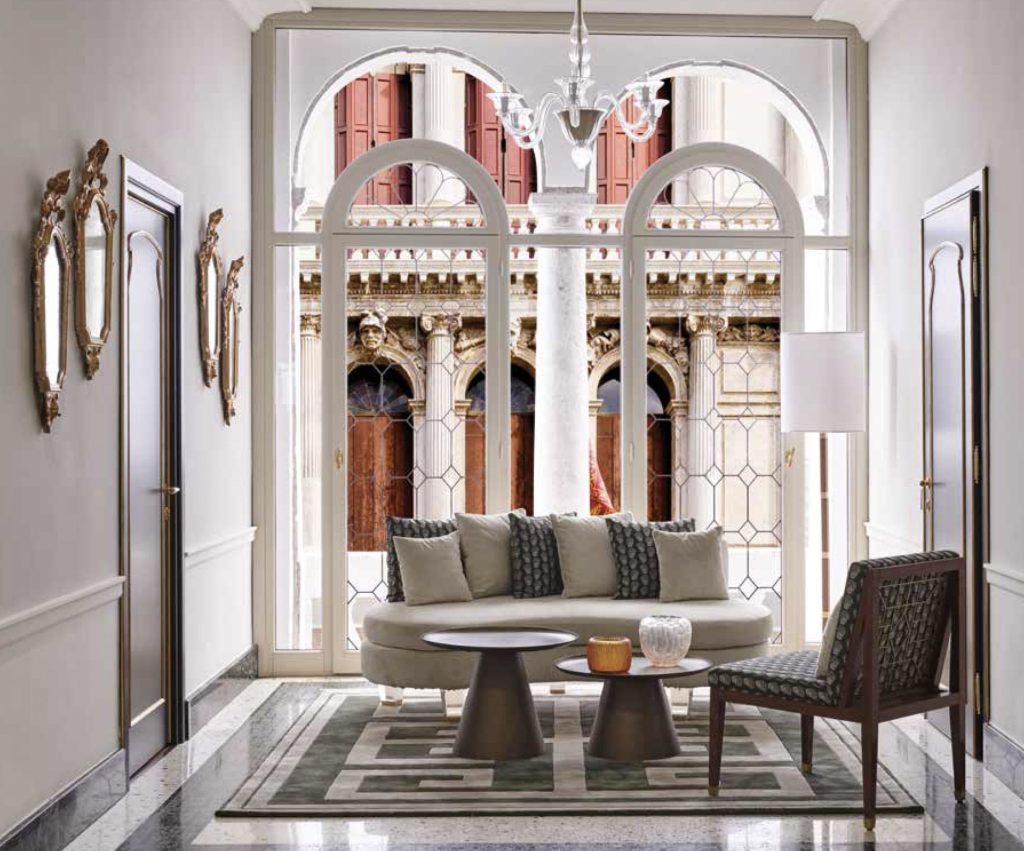
Think of this 32-room hotel as a contrast to the bombastic names that dominate the hotel scene here—one powered by a generosity that only family-run properties can offer. (The jars of candy in the lobby are, dangerously, regularly refilled.) Owner Sara Maestrelli painstakingly restored a trio of buildings minutes from Piazza San Marco, and the gem-like result acts as a tribute to traditional Italian crafts. There’s glass everywhere, from elaborate Murano-blown chandeliers to the keepsake-like key fobs; the headboards are upholstered in custom fabrics by local textile house Rubelli. Even the gold-leather menu holders are made-to-order by Consani e Giannini.
Rooms 21 and 22 don’t connect, but they do share a discreet private staircase, so they’re perfect if you’re travelling in a small group. Or you can dispense with superstition and book room 13, Maestrelli’s favourite, which sits at the heart of the hotel, with its own private terrace hidden from the hubbub below. And yes, there is a golden violin, though it’s easy to overlook, in a glass vitrine right by the entrance.
CITY CHIC
THE FIFTH AVENUE HOTEL
New York, United States
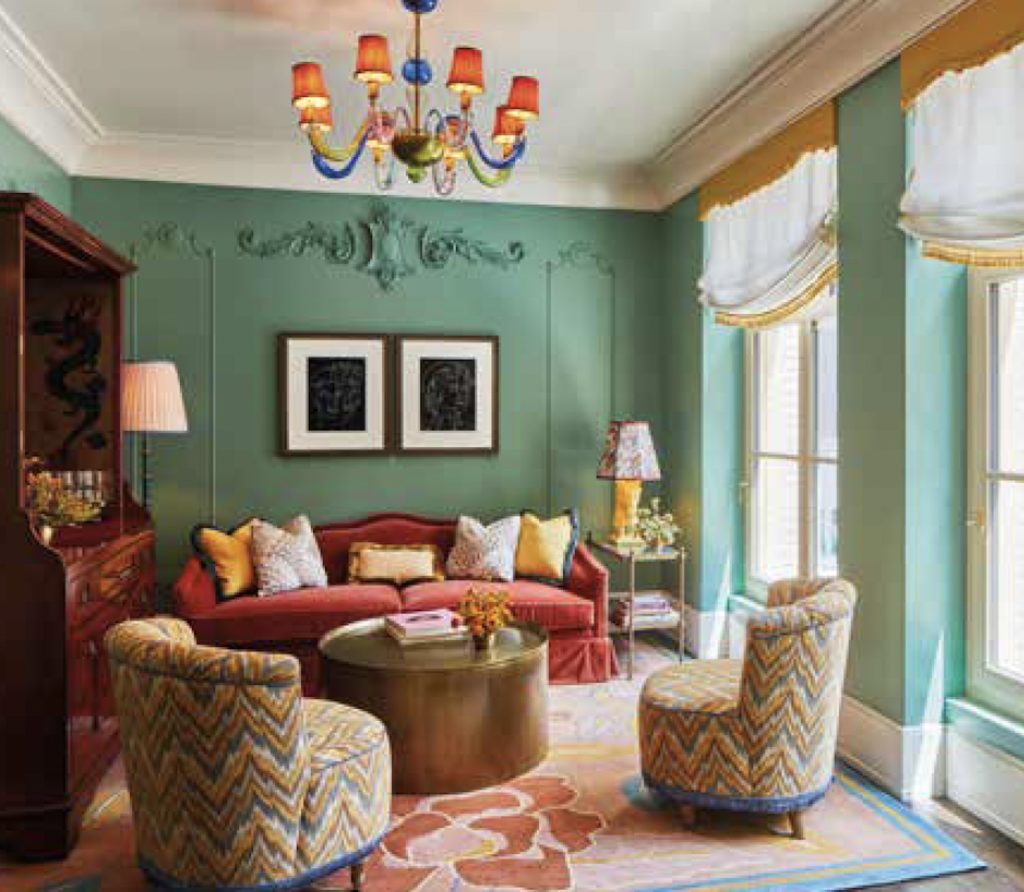
For those craving a cosy antidote to sprawling anodyne luxury, the charming Fifth Avenue Hotel has opened its doors at long last. Owner Alex Ohebshalom and designer Martin Brudnizki have transformed a 19th-century McKim, Mead & White building, plus an adjoining new 24-storey glass tower, into a colourful and kaleidoscopically eclectic take on clubby Manhattan hotels of yore. This is hospitality with a point of view—specifically, Gilded-Age New York through a heady psilocybin buzz. Rooms hum with colour, pattern, and texture, from pink and pistachio-mint walls to hand-painted bone china to a Murano-glass chandelier dangling a rainbow-hued harvest of fruits. Several of the 43 suites come with terraces; the sprawling Flâneur penthouse includes an outdoor soaking tub and Japanese garden overlooking the skyline.
The experience is one of dreamlike intimacy—the feeling that at the end of an ornate, Alice in Wonderland hallway sits your own Flatiron pied-à-terre with 24-hour butler service and an on-demand martini cart in the evenings. In true high-low NYC fashion, the seductively chic Portrait Bar offers both Ossetra caviar and a hot dog au poivre. Or head upstairs to Andrew Carmellini’s eponymous café, buzzing with Art Deco glamour, where the long-time star chef continues the reverie, serving his impeccably elevated Italian fare beneath a pair of soaring sculptural trees.
NATURE EXPLORATION
TA’AKTANA, A LUXURY COLLECTION RESORT & SPA, LABUAN BAJO
Labuan Bajo, Indonesia
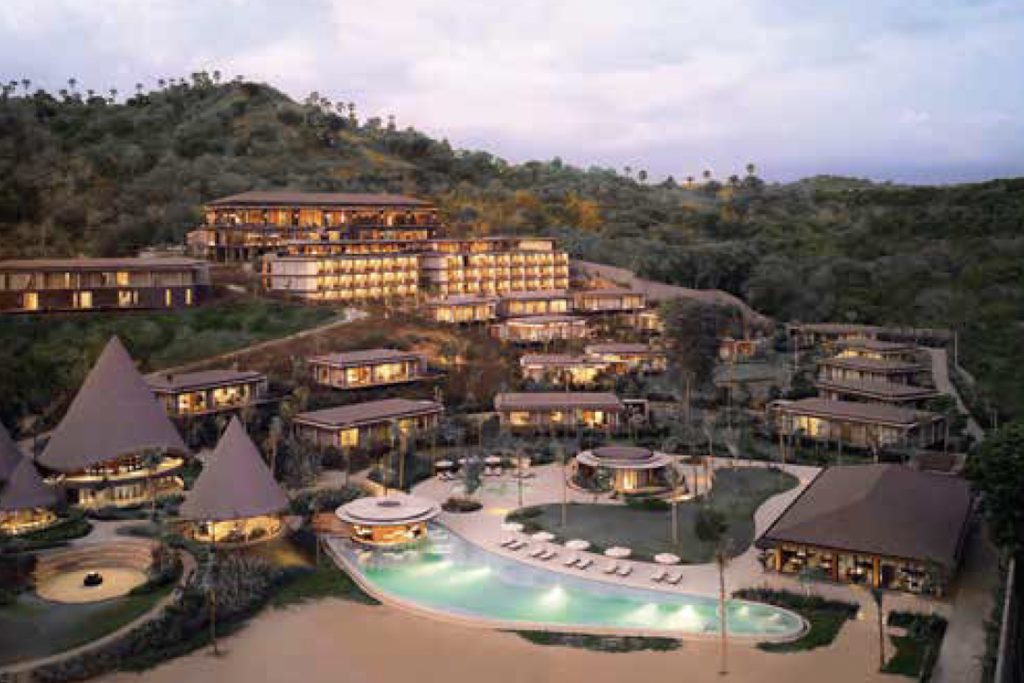
Nestled in the peaceful seaside town of Labuan Bajo, Ta’aktana, a Luxury Collection Resort & Spa is sandwiched between sea and lush woodland. 25 villas and 45 suites are spread across 16 hectares of land, their design tentpoles drawn from the traditions and architectural features of the native Manggarai community. Balinese studio ANP Interiors looked to the spider-webbed Lingko rice fields and tapered village huts to create structures in a cascading formation, reflecting the surrounding landscape. Indigenous crafts and fibres, handcrafted wood techniques, and local artwork add to the cultural influences that shape the visual and textural experience.
For travellers who prioritise adventure and exploration above all else, Labuan Bajo is the ideal starting point to set out from for jaunts through wild forests and across the Flores Sea, diving opportunities around the Makassar reef, hikes on Padar island, spelunking in the Batu Cermin and Goa Rangko caves, walks through the cone-shaped Wae Rebo village houses, and tours of the no-introductions-needed Komodo National Park to encounter its eponymous reptiles.
Overwater Sea Villas, perched on the edge of the property atop the Flores Sea, offer front-row seats to the magnificent sunset and panoramic ocean views from your own personal balcony. For an even bigger affair, the Mansion, a 459-squaremetre, three-bedroom behemoth, with a spacious terrace, dining room for 10, and private pool, provides a sanctuary for larger groups.
Leros sates the appetite with assorted dishes curated from the Indonesian archipelago’s diverse regional cuisines. Fresh sambal is made à la minute, according to your preferences. Robatayaki specialist Taba melds the bold art of Japanese open-flame cooking with sustainably sourced seafood. Umasa is where family-style Indonesian dining takes centre stage; try the Rantang tasting menu for an intriguing exploration of the vast range of authentic local flavours.
UPDATED CLASSIC
MAROMA, A BELMOND HOTEL
Riviera Maya, Mexico
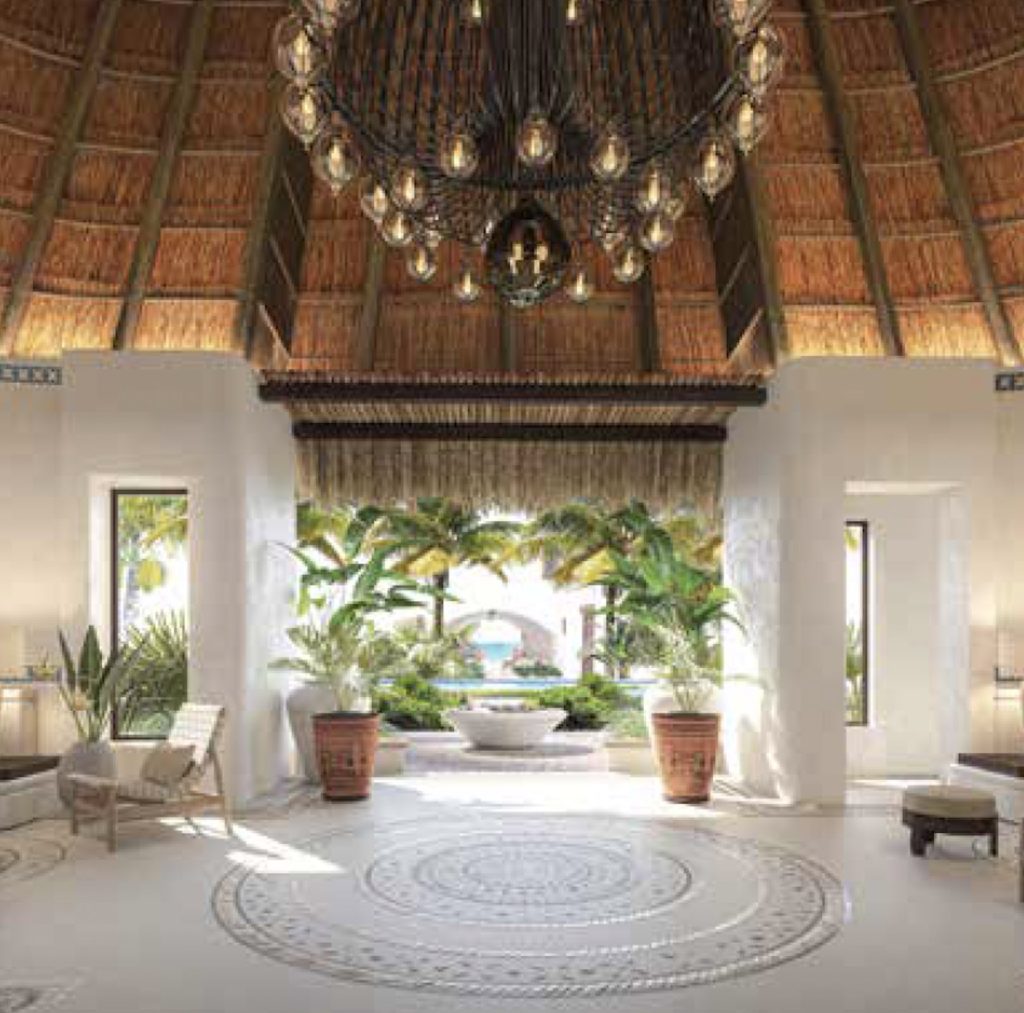
Interior designer Tara Bernerd brought her swaggering style to the multi-million-dollar reimagining of this property, the first of Belmond’s historic North American hotels to benefit from the deep pockets of new owner LVMH.
She met the challenge magnificently. Checking into one of the 72 rooms or villas, decorated in a style best described as Mexican mid-century modern, feels like staying at the beachfront home of a sophisticated friend. The airy spaces are heavy on earth tones, with dashes of turquoise and yellow on details such as the floor tiles—made, like 80 per cent of the decorative elements, right here in Mexico. The suites are jam-packed with thoughtful touches, too: Take the branded sunglass-cleaning cloth, or the minibar and its full cocktail making set, plus unisex cotton caftans (not robes) to wear in the room or on the beach.
The Curtis Stone-helmed restaurant, Woodend, is fine, but the food’s just as good at the hotel’s own all-day spot, Casa Mayor. Make sure to order its catch of the day in molcajete, a tart, corn-studded ceviche of locally caught fish. Better yet, make it two. One won’t be enough.
LUXURY ADVENTURE
SHINTA MANI MUSTANG
Mustang, Nepal
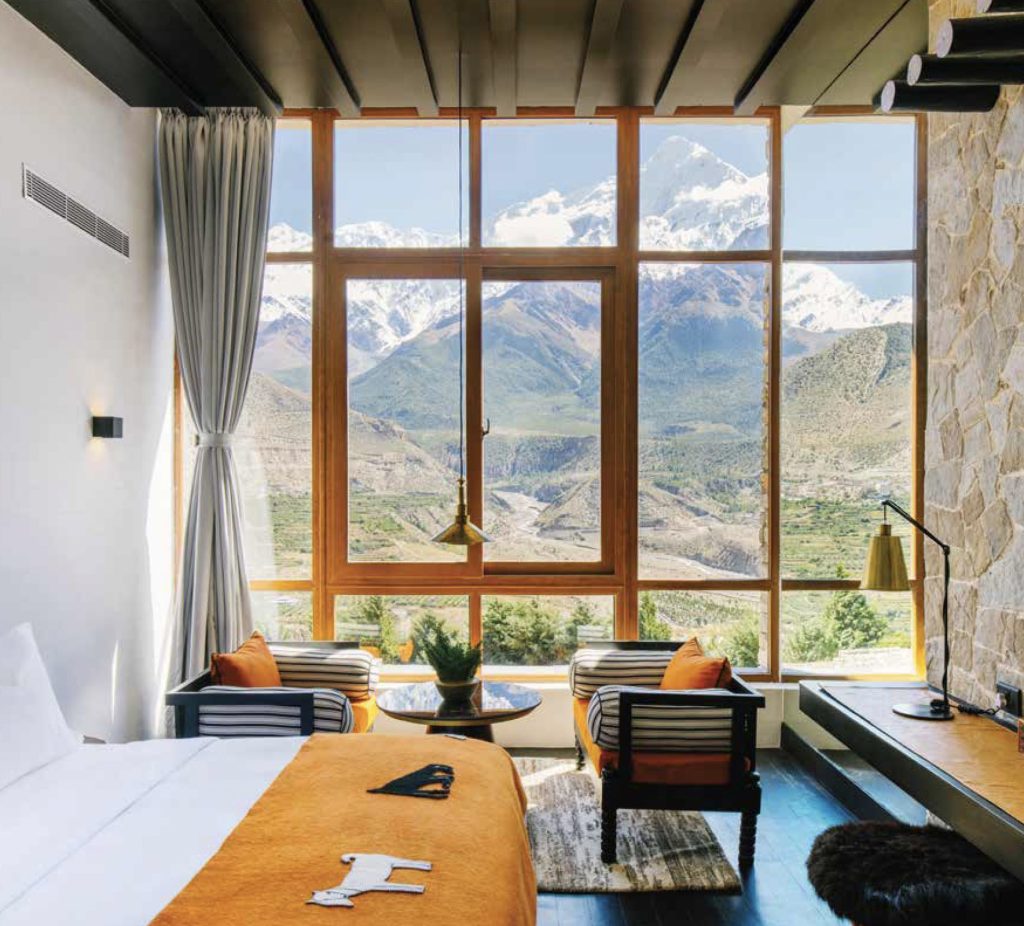
You don’t have to leave the remote grounds of Nepal’s Shinta Mani Mustang, the third property in architect Bill Bensley’s eponymous hotel collection, to feel immersed in the culture of this ancient mountain kingdom. Guests can join a monk in the on-site puja room for sunrise chants or partake in a healing session with the resident amchi, an 11th-generation doctor of traditional Tibetan medicine. The surrounding powder-dusted peaks are perfectly framed in each bedroom’s floor-to-ceiling windows, the yak-fur-lined bar serves local apple brandy, and the restaurant’s nine-course momo tasting menu schools guests in the region’s staple steamed dumplings.
But hotelier Jason Friedman, a partner in the project, intended the 29-suite retreat to be a cushy base camp. Guests can enjoy immersive excursions, such as a trek to a medieval village believed to be the last place in Mustang where the pre-Buddhist religion of Bon is still practiced, or a lunch of Thakali curry cooked in a local home. The real luxury, Friedman says, is getting to explore a region few people have ever seen.
BEACH RESORT
KONA VILLAGE, A ROSEWOOD RESORT
Hawaii, United States
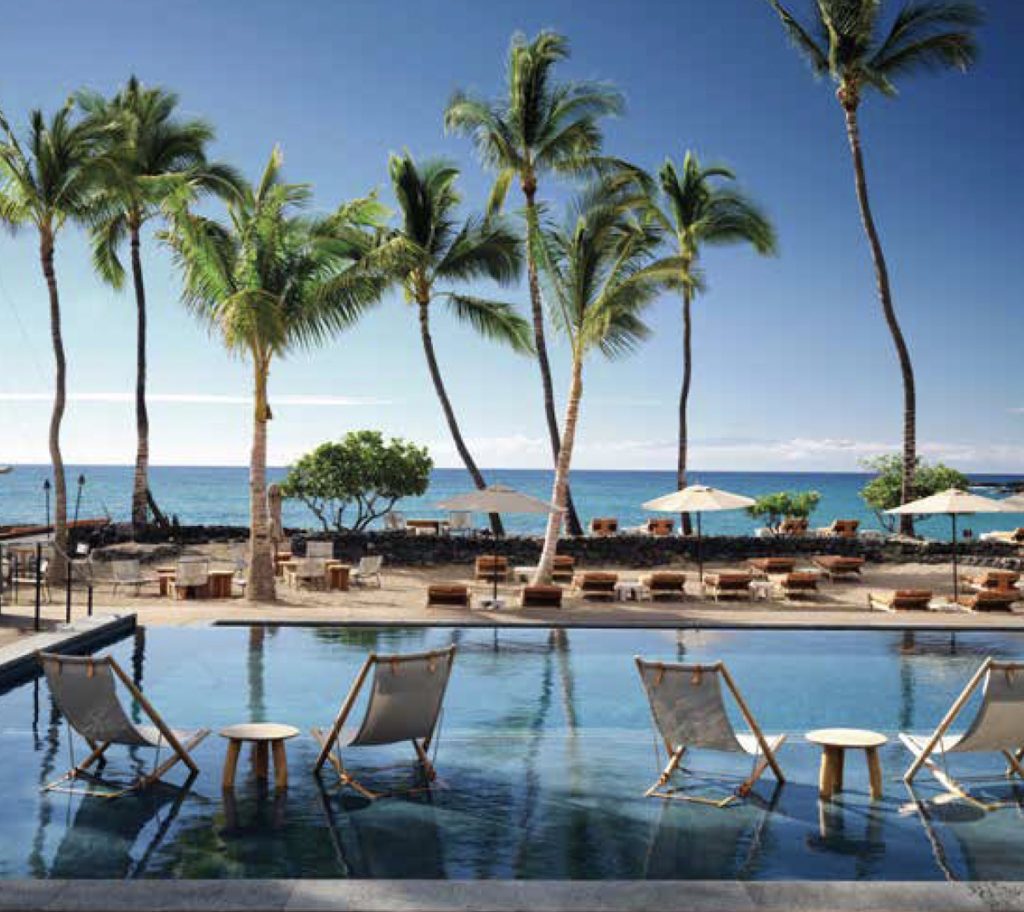
When news spread that the posh Rosewood brand would resurrect Hawaii’s beloved Kona Village resort, which was decimated by a tsunami in 2011, there was both celebration and concern. Could the laid-back vibe guests returned for year after year be recreated? By the time it reopened, it had Wi-Fi, plus a striking new spa improbably built into the lava flow and a sea-to-table restaurant with an outstanding selection of white Burgundy (both impressive additions).
But the soul of the place lives on at the restored Shipwreck Bar, a beachedschooner-turned-watering-hole that belonged to the founders. The vessel, where Jim Morrison once infamously consumed a record 21 Mai Tais, miraculously survived the storm. (Staff joke that the only thing stronger than the drinks is the boat itself.) Take a seat and listen closely enough, and you can overhear guests reminiscing about stays here as long ago as the 1960s. It’s proof that even with modern upgrades, the place can still transport you to the Hawaii of another era.
NATURAL IMMERSION
ANDBEYOND PUNAKHA RIVER LODGE
Punakha, Bhutan
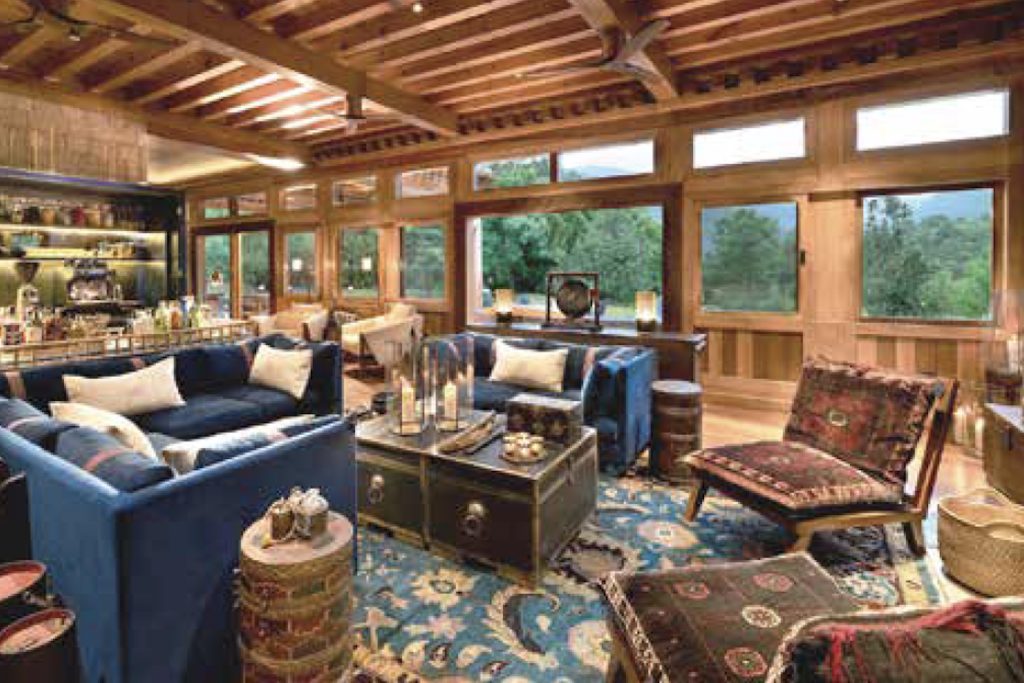
If you’ve travelled to andBeyond’s African camps, you know to expect the unexpected: Makeshift bars set up near watering holes frequented by elephants and zebras; picnics arranged in the bush as giraffes graze in the distance. So how does the seasoned operator transport that experience to the Bhutanese countryside?
At first glance, andBeyond Punakha River Lodge’s six sumptuous, tent-like lodgings may seem familiar to safari-goers, but the ethos is distinctly local. There are no game drives here; instead, tours lean into the Himalayan kingdom’s rich history and Buddhist traditions: archery lessons, treks to skyhigh temples, and visits to secluded mountaintop villages, all surrounded by snowcapped peaks. But (spoiler alert) the surprises continue—a breakfast spread overlooking a temple might await you at the end of an early-morning hike, lunch can materialise on a cliff surrounded by colourful prayer flags fluttering in the breeze, and drinks appear on a sandy riverbank as the sun sets over the 17th-century Punakha Dzong monastery.
…AND OUR BEST HEALTH AND WELLNESS DESTINATION OF THE YEAR
HEALTH & LONGEVITY CENTRE
HUMANSA
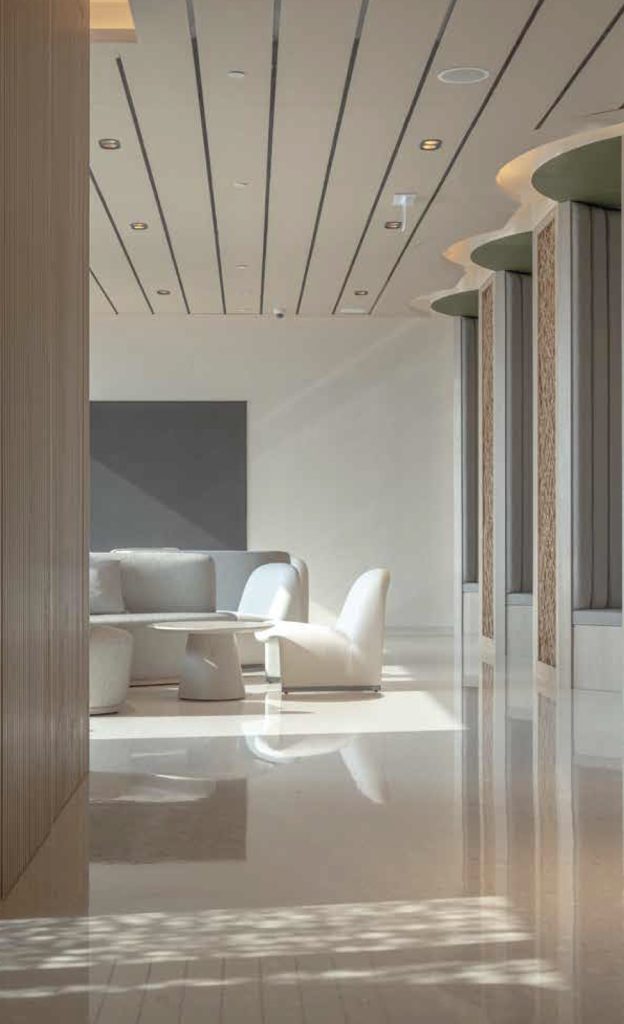
We have all heard the adage “health is wealth,” and no one takes the directive more to heart than Humansa. A pioneering force in redefining the health and wellness sector, with a focus on the prevention of rather than reaction to illness, Humansa’s objective is to empower individuals to lead healthier, more fulfilling lives by enabling them to take ownership of their personal well-being and enhance their quality of life in the long term.
Optimising longevity, lifestyle, and health are the key pillars that Humansa’s advanced, technology-driven programme is built on. Acting as a wellness concierge, the company delivers customised services to clients who seek a bespoke experience aimed at proactively evaluating and improving their health. Comprehensive assessments, cutting-edge diagnostics, genetic profiling, biomarker analyses, early risk detection, AI-powered insights, and tailored care plans are all part and parcel of Humansa’s multi-pronged strategy towards preventing health concerns and promoting better living.
Humansa’s range of solutions run the gamut from physical, mental, cardiometabolic, and cognitive to nutritional, balancing lifespan and healthspan in equal measure to address longevity goals and demonstrate the breadth of truly inclusive healthcare.








